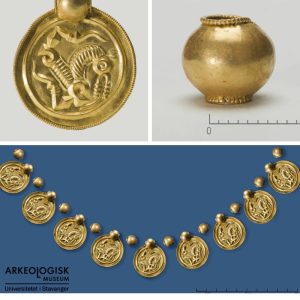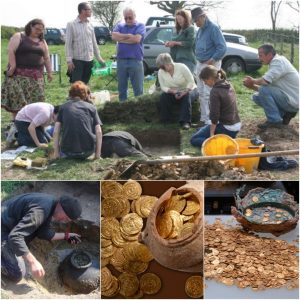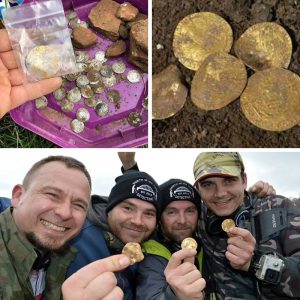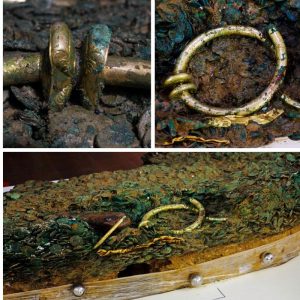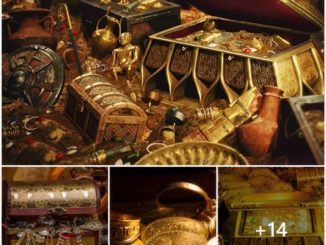
Amateur archaeologist Erlend Bore posing with a gold treasure photographed shortly after he found it with the help of a metal detector on the island of Rennesoy in Stavanger.
Amateur archaeologist Erlend Bore posing with a gold treasure photographed shortly after he found it with the help of a metal detector on the island of Rennesoy in Stavanger.
A Norwegian out walking on doctors’ advice unearthed rare 6th-century gold jewellery using a newly bought metal detector, a discovery archaeologists said on Thursday was Norway’s “gold find of the century”.
“At first I thought it was chocolate coins or Captain Sabertooth coins,” said 51-year-old Erlend Bore, referring to a fictional Norwegian pirate.
“It was totally unreal.”
The cache comprised nine Norwegian gold medallions and gold pearls that once formed an opulent necklace, as well as three gold rings.

Archaeologists in Norway unearth the most significant gold treasure of the century.
Archaeologists say the find is unique because of the design on the medallions – a type of horse from Norse mythology.
Bore, who dreamt of becoming an archaeologist as a child, made the discovery on a farmer’s land near Stavanger in August after he bought a metal detector on his doctors’ recommendations to get more exercise.
He had been out searching and was about to head home for the day when the device suddenly began beeping on a hillside.
He called archaeologists, who took over the search.
The jewels, which weigh a little more than 100 grammes, were discovered to date from around 500 AD.

Coin-like gold pendants that are part of the gold treasure.
Coin-like gold pendants that are part of the gold treasure.
“It’s the gold find of the century in Norway,” said Ole Madsen, the head of the University of Stavanger’s Museum of Archaeology.
“To find that much gold all at once is extremely unusual.”
The most recent comparable find in Norway dates back to the 19th century.

“Given the location of the discovery and what we know from other similar finds, this is probably a matter of either hidden valuables or an offering to the gods during dramatic times,” professor Hakon Reiersen said.
In line with Norwegian law, both Bore and the landowner will receive a reward although the sum has not yet been determined.
